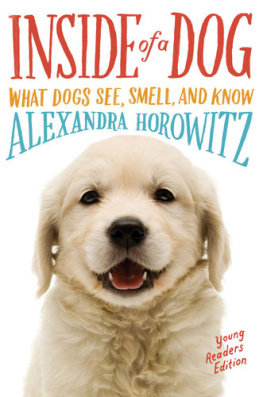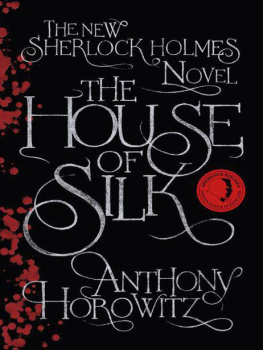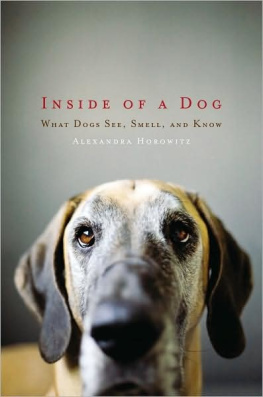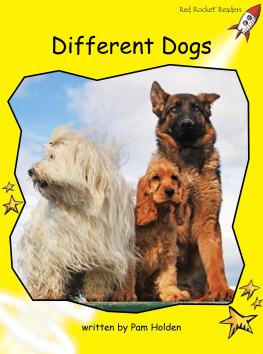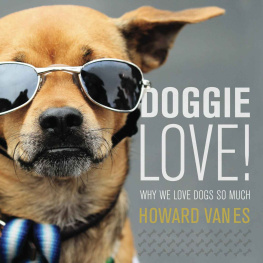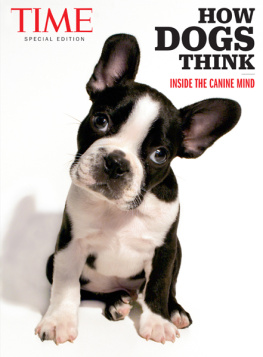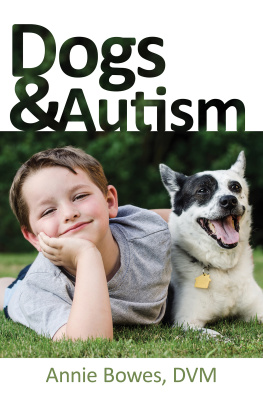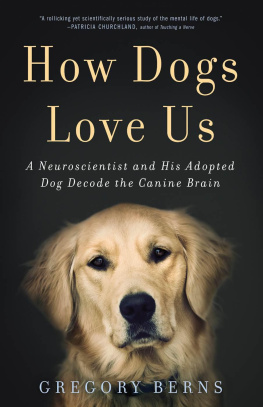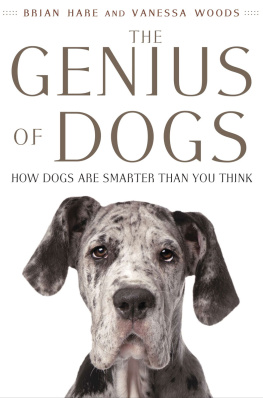Thank you for downloading this Simon & Schuster ebook.
Get a FREE ebook when you join our mailing list. Plus, get updates on new releases, deals, recommended reads, and more from Simon & Schuster. Click below to sign up and see terms and conditions.
CLICK HERE TO SIGN UP
Already a subscriber? Provide your email again so we can register this ebook and send you more of what you like to read. You will continue to receive exclusive offers in your inbox.
For all the dogs who have been, are now, and are yet to be
Bonded

Once a dog has your heart, you are stuck: there is no undoing it. Scientists, ever unromantic, call it the dog-human bond. Bond captures not just the tight connection, but also the reciprocity; not just the mutuality, but also the affection. We love dogs and (we assume) are loved by them. We keep dogs but are also kept by them.
We could call it the human-dog bond, but then wed have our priorities wrong. The dog figures largely in the shorthand used to encapsulate the unique, symbiotic relationship between us and our pups. Most everything that the dog does serves to strengthen the connection: both effusive greetings and hopelessly bad behavior. The writing of E. B. White, who lived with over a dozen dogs through his lifemany known to the readers of his pieces in the New Yorker exemplified the humanity that the bond allows us to grant to dogs. When Americans heard that Russia was going to send a dog into space, White reasoned he knew why: The little moon is incomplete without a dog to bay at it.
Or, it may just be assumed that if were going to the moon, well want to bring our constant companions with us. They have been by our sides for thousands of years before we dreamed of traveling into spacebefore not just rockets, but every technological step that produced them, from metalworking to motor making. Before we were living in citiesbefore any of the recognizable elements of contemporary civilization were in placewe were living alongside dogs.
When early humans unconsciously made the decision to begin domesticating the wolves around them, they changed the course of the species development. And, too, when each person makes the decision to breed, buy, or rescue a dog, we enter into a relationship that will change us. It changes the course of our days: dogs need to be walked, fed, attended to. It changes the course of our lives: dogs weave their way into our psyches with their steady presence by our sides. It has changed the course of Homo sapiens.
The story of dogs and humans has even led, in the twenty-first century, to the appearance of humans who research dog cognition. This is where I come in: my job is observing and studying dogs. Not petting; not playing with; not just looking fondly at. It comes as a great disappointment to those who apply to work with me in the Dog Cognition Lab that we do not keep puppies nor do we even touch puppies as part of our work.questions like whether dogs can sniff out a small difference in food, or whether they prefer one odor over anotherany people in the room with the dog have to make themselves completely boring to the dogs. This means: no talking to, cooing over, calling, or responding to a dog; no sharing adoring gazes with or tickling under the chin of the dog. Sometimes we wear sunglasses in their presence or turn our backs should a dog look to us for any reason. In other words, in the experimental room with dogs we fall somewhere between acting like trees and acting inexcusably rude.
We are not aloof; its just hard enough to see whats happening without being part of whats happening. Since the tools animal-behavior researchers useeyesare those we use for other means, it can be hard to tune them to see the behavior in front of us, rather than what we expect to see.
That said, humans are natural animal observers. Historically, we had to be. To elude predators, or to hunt prey, our hominid ancestors had to watch what animals were doing, to notice the appearance of something new moving in the grass or trees: it affected them. Their skill at watching was the difference between getting dinner and being dinner. Hence my job turns evolutions job on its head: Im not looking for the newest element of a scene. Instead, I aim to look at that which we mostly ignorethat with which were most familiarand to see it again in a new way.
I study dogs because Im interested in dogsnot just for what dogs can tell us about humans. Still, every aspect of looking closely at dog behavior has a human component. We look at our dogslooking back at us wagginglyand wonder about ancient humans who met their first proto-dogs. We ask the questions of dog mind that we do because of our interest in the workings of our own minds. We examine how dogs react to usso differently than other species do. We wonder what effect living with dogs has on our society, salutary or damaging. We gaze into dogs eyes and want to know who dogs see when they gaze back. Our lifestyle with dogs and our science of dogs both reflect human interests.
While considering dogs scientifically, I have become more and more alert to the culture of dogdom. Dogs come to our lab with their owners, and though we are often only looking at the behavior of the quadrupedal member of that pair, the dog-owner relationship is the elephant in the room. As someone who has always lived with dogs, it is the very culture that I am immersed in; but I began to see it more clearly from the perspective of an outsider, wearing my scientists hat. The ways we acquire, name, train, raise, treat, talk to, and see our dogs deserve more attention. Dogs can slip from being bonded to us to being bound by us. Much of what we accept as the way to live with dogs is odd, surprising, revelatory, even disturbingand contradictory.
In fact, the dogs place in society is steeped in contradiction. We sense their animalism (feeding them bones, taking them outside to pee), yet enforce an ersatz humanness (dressing them in raincoats, celebrating their birthdays). To maintain the look of a breed, we cut their ears (to look more like wild canids), but squash their faces (to look more like primates). We speak of their gender yet regulate their sex life.
Dogs have the legal status of property, but we endow them with agency: they want, they choose, they demand, they insist. They are objects, to the law, but they share our homesand often our sofas and beds. They are family, but they are owned; they are treasured, yet they are regularly abandoned. We name one, yet euthanize millions of nameless others.
We celebrate their individuality but breed them for sameness. In developing fantastical breeds, we are destroying the species: weve made short-nosed dogs who cannot breathe properly; small-headed dogs who have too little room for their brains; giant dogs who cannot bear their own weight.
They have become familiar, but in so being they are obscured. They have stopped being viewed for who they are. We talk to them, but we do not listen; we see them, but we do not see.
This state of affairs should startle us. Our interest in dogs is as dogs : as animals; as non-humans. They are friendly, tail-wagging ambassadors for the animal world that we increasingly distance ourselves from. As our gaze turns evermore toward technology we have stopped simply being in the worlda world peopled by animals. Animals on your property, in your city? Nuisance . Animals you havent invited into your house? Pests . Those who you have? Family members , but also owned property . Part of what we love about the dogs who occupy the exalted, final position is that they are unlike the rest of our family. There is something of the Other behind those wide-open eyes; someone unexplained, unexplainable; a reminder of our animal selves. And yet today we seem to be doing all we can to eliminate the animalness from dogs just as we are walking the human race out of the natural world, tethered to our phones, visiting our friends via screens (not in person), reading screens (not books), visiting places on screens (not on foot).
Next page
